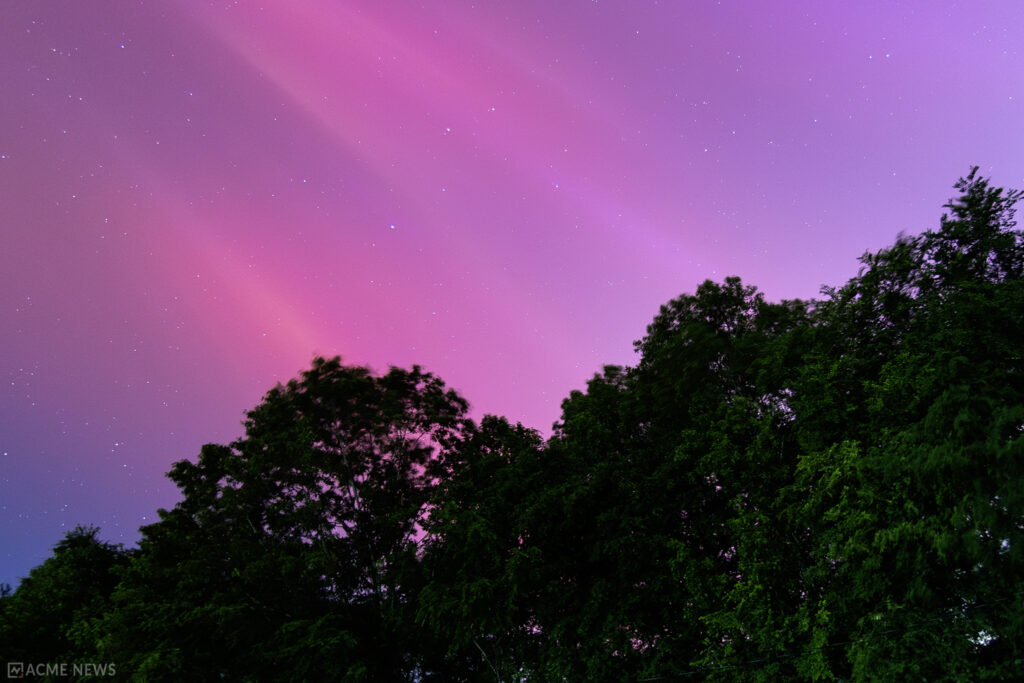
ASHEBORO N.C. (ACME NEWS) – An ‘extreme’ solar storm lit up the sky over North Carolina with auroras visible to the naked eye in a rare celestial event.
The Space Weather Prediction Center, part of the National Oceanic and Atmospheric Administration, located in Boulder, Colorado, monitors solar activity and had issued a warning for a ‘severe’ (G4) solar storm, expected to impact Earth on May 10-11th. Friday night, May 10th, space weather forecasters upgraded the storm from ‘severe’ (G4) to ‘extreme’ (G5). An ‘extreme’ (G5) solar storm represents the best chances of seeing auroras as charged particles are pushed further from the poles into lower latitudes making auroras visible over more of the Earth.
The solar storm was cuased by a coronal mass ejection (CME) from the Sun earlier this week. A CME is a cloud of charged particles ejected from the sun at high speeds. The auroras visable in the sky are the result of charged particles from the Sun colliding with Earth’s magnetic field, which directs them toward the magnetic poles. The particles then interact with gases in the atmosphere, causing them to emit light in various colors.
And, emit light they did. Social media was flooded with photos of auroras, not only across N.C. but as far south as the Bahammas. The auroras could easily be seen with the naked eye in N.C., so long as you are far enough away from light polution. Photos taken using long exposure photography or using night mode on a camera can make them more visible.

The storm was reported to have caused power grid irregularities and degradation of high frequency communication and GPS, so far, no major outages have been reported.
North Carolina might see auroras once every few years under optimal conditions. For those hoping to catch future auroras, NOAA recommends checking aurora forecasts and finding a dark location away from city lights, especially on clear nights between 10 p.m. and 2 a.m.
For further details and real-time updates, visit NOAA’s Space Weather Prediction Center at NOAA’s website.
###

